-
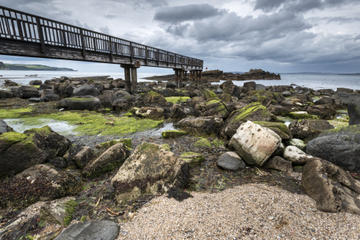 Ballycastle
Ballycastle This tiny town in Northern Ireland’s County Antrim is on the far end of the Antrim Coast and Glens Area of Outstanding Natural Beauty. As a result, it’s home to stretches of scenic coastline and beautiful mountain passes that make it an ideal destination for travelers looking to get ou
Ballycastle
Ballycastle This tiny town in Northern Ireland’s County Antrim is on the far end of the Antrim Coast and Glens Area of Outstanding Natural Beauty. As a result, it’s home to stretches of scenic coastline and beautiful mountain passes that make it an ideal destination for travelers looking to get ou
-
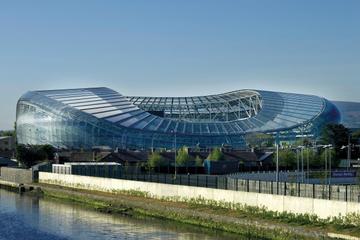 Aviva Stadium
Aviva Stadium Dublin residents are passionate about sport, and the Aviva stadium is the pulsing epicenter of Rugby Union and football (soccer). This 51,700-person stadium holds Ireland’s largest sporting events and concerts, and tours are available on days that don’t have a concert or large-scale
Aviva Stadium
Aviva Stadium Dublin residents are passionate about sport, and the Aviva stadium is the pulsing epicenter of Rugby Union and football (soccer). This 51,700-person stadium holds Ireland’s largest sporting events and concerts, and tours are available on days that don’t have a concert or large-scale
-
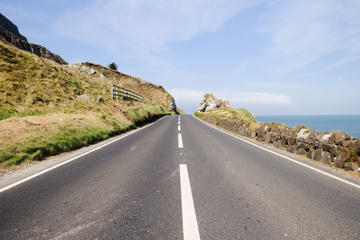 Antrim Coastal Drive
Antrim Coastal Drive Running along Northern Irelands coast, the Antrim Coastal Drive goes past all the major coastal attractions in the country, and, if you continue to follow the A2, all the way to the walled city of Derry on the border. Tucked under limestone cliffs with the sea crashing a few f
Antrim Coastal Drive
Antrim Coastal Drive Running along Northern Irelands coast, the Antrim Coastal Drive goes past all the major coastal attractions in the country, and, if you continue to follow the A2, all the way to the walled city of Derry on the border. Tucked under limestone cliffs with the sea crashing a few f
-
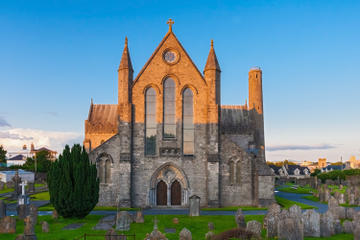 St Canice’s Cathedral and Round Tower
St Canice’s Cathedral and Round Tower The vast Gothic cathedral of St Canice is named in honor of a sixth-century Irish abbot and preacher and sits on the site of a church dating right back to that time. Completed in 1285, it is a prominent landmark in the charming – and tiny – Irish city of Kilke
St Canice’s Cathedral and Round Tower
St Canice’s Cathedral and Round Tower The vast Gothic cathedral of St Canice is named in honor of a sixth-century Irish abbot and preacher and sits on the site of a church dating right back to that time. Completed in 1285, it is a prominent landmark in the charming – and tiny – Irish city of Kilke
-
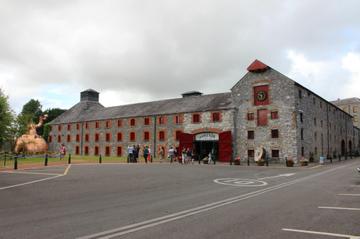 Old Midleton Distillery
Old Midleton Distillery The Old Midleton Distillery near Cork, Ireland is home to the famous Jameson Irish whiskey. The distillery was founded by the Murphy brothers in the early 19th century, and it wasnt until 1975 that the new distillery, adjacent to the old one, was built. The new distillery p
Old Midleton Distillery
Old Midleton Distillery The Old Midleton Distillery near Cork, Ireland is home to the famous Jameson Irish whiskey. The distillery was founded by the Murphy brothers in the early 19th century, and it wasnt until 1975 that the new distillery, adjacent to the old one, was built. The new distillery p
-
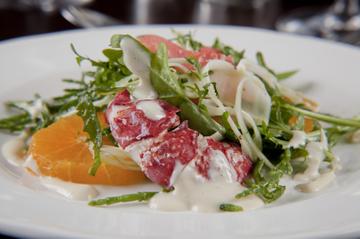 Kinsale
Kinsale Seemingly everything in Kinsale—from the fishing, whale watching, and scuba diving to the gourmet fish and seafood—revolves around the Atlantic Ocean that laps at Kinsale’s shores. In summer months when the sun comes out, locals make the drive from Cork to Kinsale’s sandy beaches, and ther
Kinsale
Kinsale Seemingly everything in Kinsale—from the fishing, whale watching, and scuba diving to the gourmet fish and seafood—revolves around the Atlantic Ocean that laps at Kinsale’s shores. In summer months when the sun comes out, locals make the drive from Cork to Kinsale’s sandy beaches, and ther
-
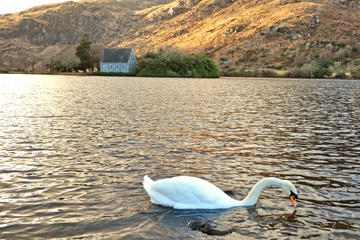 Gougane Barra
Gougane Barra When strolling through the trees of the Gougana Barra Forest Park, and gazing out at the placid waters of Gougana Barra’s lake, you can see why this corner of southwestern Ireland was a place of historical solace. It was here on the island in the middle of the lake, that St. Finnbar—
Gougane Barra
Gougane Barra When strolling through the trees of the Gougana Barra Forest Park, and gazing out at the placid waters of Gougana Barra’s lake, you can see why this corner of southwestern Ireland was a place of historical solace. It was here on the island in the middle of the lake, that St. Finnbar—
-
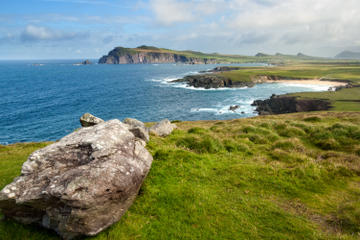 Slea Head
Slea Head Slea Head is a headland on the western end of the Dingle Peninsula in southwestern Ireland. It is also considered to be the most western point in Europe. Slea Head is a scenic view point offering visitors a look at the Blasket Islands and South Kerry. It is a rocky region that was part o
Slea Head
Slea Head Slea Head is a headland on the western end of the Dingle Peninsula in southwestern Ireland. It is also considered to be the most western point in Europe. Slea Head is a scenic view point offering visitors a look at the Blasket Islands and South Kerry. It is a rocky region that was part o
-
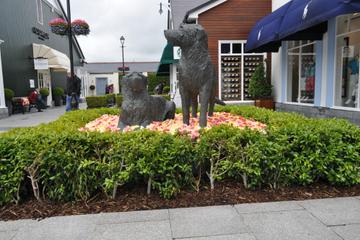 Kildare Village
Kildare Village If you forgot your favorite rain jacket at home, or need to pick up some gloves or a windbreaker for a trip to Western Ireland, Kildare Village is Dublin’s most popular outlet shopping experience. Over 60 different big name brands are found in the shopping village, with stores ofte
Kildare Village
Kildare Village If you forgot your favorite rain jacket at home, or need to pick up some gloves or a windbreaker for a trip to Western Ireland, Kildare Village is Dublin’s most popular outlet shopping experience. Over 60 different big name brands are found in the shopping village, with stores ofte
-
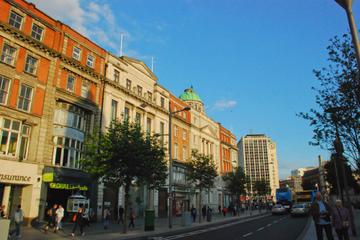 O’Connell Street
O’Connell Street Any visitor touring Dublin by foot will eventually walk down O’Connell Street. This bustling street is Dublin’s main thoroughfare, and while it’s only approximately a quarter mile in length, it’s believed to be the widest urban street found anywhere in all Europe. O’Connell Street
O’Connell Street
O’Connell Street Any visitor touring Dublin by foot will eventually walk down O’Connell Street. This bustling street is Dublin’s main thoroughfare, and while it’s only approximately a quarter mile in length, it’s believed to be the widest urban street found anywhere in all Europe. O’Connell Street
-
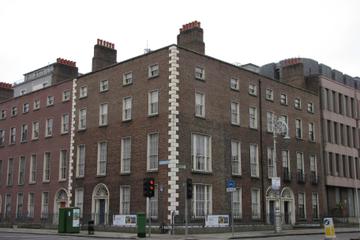 Number Twenty Nine
Number Twenty Nine The Georgian Period was a regal time, when many of Dublin’s most well to do residents resided in lavish homes. One of those stunning historical abodes is Number Twenty Nine, a Georgian townhome from the late 18th century that’s now a public museum. Tour every corner of this extr
Number Twenty Nine
Number Twenty Nine The Georgian Period was a regal time, when many of Dublin’s most well to do residents resided in lavish homes. One of those stunning historical abodes is Number Twenty Nine, a Georgian townhome from the late 18th century that’s now a public museum. Tour every corner of this extr
-
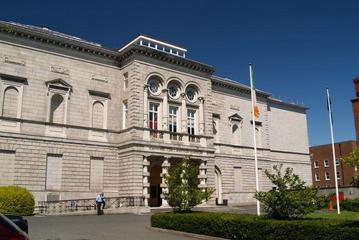 National Gallery of Ireland
National Gallery of Ireland Dublin is known for its inclement weather, and if a chilly drizzle starts raining down from the city’s notoriously gray skies, one of the best places to escape the rain is at the National Gallery of Ireland. This renowned national gallery of art began in 1864 with only
National Gallery of Ireland
National Gallery of Ireland Dublin is known for its inclement weather, and if a chilly drizzle starts raining down from the city’s notoriously gray skies, one of the best places to escape the rain is at the National Gallery of Ireland. This renowned national gallery of art began in 1864 with only
-
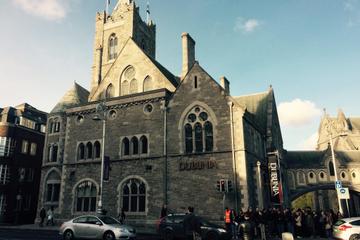 Dublinia
Dublinia Medieval Dublin was a disease-riddled era of slavery, Vikings, and torture, where Bubonic Plague and bloody warfare were parts of everyday life. Though Dublin isn’t often equated with Vikings, the conquering seafarers played an important role in Dublin’s Medieval past, and at the popular
Dublinia
Dublinia Medieval Dublin was a disease-riddled era of slavery, Vikings, and torture, where Bubonic Plague and bloody warfare were parts of everyday life. Though Dublin isn’t often equated with Vikings, the conquering seafarers played an important role in Dublin’s Medieval past, and at the popular
-
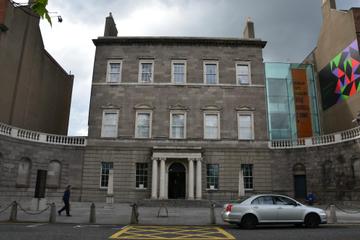 Dublin City Gallery The Hugh Lane
Dublin City Gallery The Hugh Lane At this laidback, small-scale gallery in Dublin’s happening city center, visitors can browse over 2,000 pieces of modern and contemporary art. “The Hugh Lane,” as locals call it, holds the work of well-known artistic greats such as Monet, Renoir, Degas, and Manet,
Dublin City Gallery The Hugh Lane
Dublin City Gallery The Hugh Lane At this laidback, small-scale gallery in Dublin’s happening city center, visitors can browse over 2,000 pieces of modern and contemporary art. “The Hugh Lane,” as locals call it, holds the work of well-known artistic greats such as Monet, Renoir, Degas, and Manet,
-
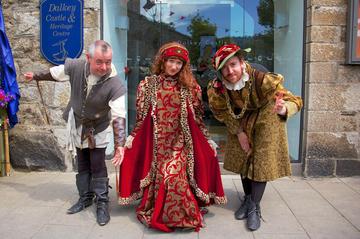 Dalkey Castle
Dalkey Castle Just outside of Dublin, Dalkey Castle entertains and informs with live actors from the Deilg Inis Theatre Company who reenact typical scenes from what life was like in Ireland in the 1500s. You might see an archer shooting a longbow, a barber offering haircuts, or a cook making tradi
Dalkey Castle
Dalkey Castle Just outside of Dublin, Dalkey Castle entertains and informs with live actors from the Deilg Inis Theatre Company who reenact typical scenes from what life was like in Ireland in the 1500s. You might see an archer shooting a longbow, a barber offering haircuts, or a cook making tradi
-
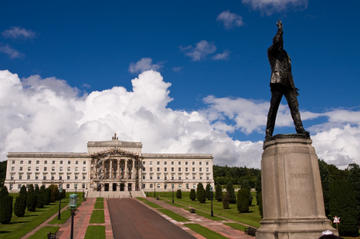 Stormont Estate and Parliament Buildings
Stormont Estate and Parliament Buildings The Stormont Estate and Parliament buildings are home to the Northern Ireland Assembly, which is responsible for making laws transferred to local jurisdiction and for providing oversight on the work of ministers and government departments. It previously hou
Stormont Estate and Parliament Buildings
Stormont Estate and Parliament Buildings The Stormont Estate and Parliament buildings are home to the Northern Ireland Assembly, which is responsible for making laws transferred to local jurisdiction and for providing oversight on the work of ministers and government departments. It previously hou
-
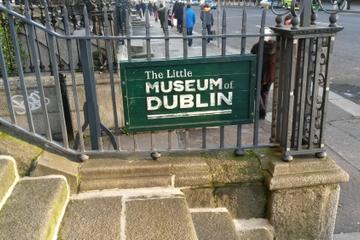 Little Museum of Dublin
Little Museum of Dublin Housed in a Georgian townhouse on St. Stephens Green, the quirky Little Museum of Dublin tells the story of the city through the years 1900 to 2000. Opening its doors in 2011, the museum was made possible by the Dubliners who donated thousands of artefacts to the nonprofit
Little Museum of Dublin
Little Museum of Dublin Housed in a Georgian townhouse on St. Stephens Green, the quirky Little Museum of Dublin tells the story of the city through the years 1900 to 2000. Opening its doors in 2011, the museum was made possible by the Dubliners who donated thousands of artefacts to the nonprofit
-
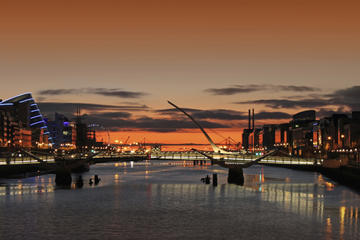 River Liffey
River Liffey Dividing Dublin into north and south, the River Liffey is the subject of stories and songs by everyone from James Joyce to Radiohead. Entwined in Dublins cultural identity, lets just say that some of the stories surrounding the Liffey are more than a little mythical: so if any Dubline
River Liffey
River Liffey Dividing Dublin into north and south, the River Liffey is the subject of stories and songs by everyone from James Joyce to Radiohead. Entwined in Dublins cultural identity, lets just say that some of the stories surrounding the Liffey are more than a little mythical: so if any Dubline
-
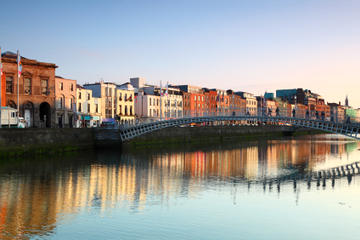 Dublin Cruise Port
Dublin Cruise Port Ireland’s most popular cruise destination, Dublin sees nearly two million cruise and ferry passengers come through its port each year. A UNESCO City of Literature since 2010, it is also a very green city, boasting more green space per square kilometer than any other European cap
Dublin Cruise Port
Dublin Cruise Port Ireland’s most popular cruise destination, Dublin sees nearly two million cruise and ferry passengers come through its port each year. A UNESCO City of Literature since 2010, it is also a very green city, boasting more green space per square kilometer than any other European cap
-
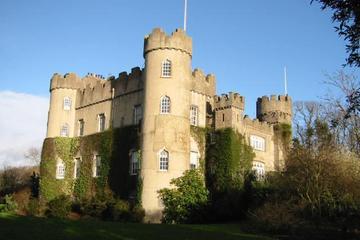 Malahide Castle
Malahide Castle Malahide Castle is one of Irelands oldest castles, built on land given to Richard Talbot, a knight who accompanied King Henry II of England to Ireland in 1174. The Talbot family resided in the castle for nearly 800 years, up until 1975 when one of the last heiresses turned it over
Malahide Castle
Malahide Castle Malahide Castle is one of Irelands oldest castles, built on land given to Richard Talbot, a knight who accompanied King Henry II of England to Ireland in 1174. The Talbot family resided in the castle for nearly 800 years, up until 1975 when one of the last heiresses turned it over
Total
1137 -travel
FirstPage PreviousPage NextPage LastPage CurrentPage:
3/57 20-travel/Page GoTo Page:
 Ballycastle
Ballycastle This tiny town in Northern Ireland’s County Antrim is on the far end of the Antrim Coast and Glens Area of Outstanding Natural Beauty. As a result, it’s home to stretches of scenic coastline and beautiful mountain passes that make it an ideal destination for travelers looking to get ou
Ballycastle
Ballycastle This tiny town in Northern Ireland’s County Antrim is on the far end of the Antrim Coast and Glens Area of Outstanding Natural Beauty. As a result, it’s home to stretches of scenic coastline and beautiful mountain passes that make it an ideal destination for travelers looking to get ou
 Aviva Stadium
Aviva Stadium Dublin residents are passionate about sport, and the Aviva stadium is the pulsing epicenter of Rugby Union and football (soccer). This 51,700-person stadium holds Ireland’s largest sporting events and concerts, and tours are available on days that don’t have a concert or large-scale
Aviva Stadium
Aviva Stadium Dublin residents are passionate about sport, and the Aviva stadium is the pulsing epicenter of Rugby Union and football (soccer). This 51,700-person stadium holds Ireland’s largest sporting events and concerts, and tours are available on days that don’t have a concert or large-scale
 Antrim Coastal Drive
Antrim Coastal Drive Running along Northern Irelands coast, the Antrim Coastal Drive goes past all the major coastal attractions in the country, and, if you continue to follow the A2, all the way to the walled city of Derry on the border. Tucked under limestone cliffs with the sea crashing a few f
Antrim Coastal Drive
Antrim Coastal Drive Running along Northern Irelands coast, the Antrim Coastal Drive goes past all the major coastal attractions in the country, and, if you continue to follow the A2, all the way to the walled city of Derry on the border. Tucked under limestone cliffs with the sea crashing a few f
 St Canice’s Cathedral and Round Tower
St Canice’s Cathedral and Round Tower The vast Gothic cathedral of St Canice is named in honor of a sixth-century Irish abbot and preacher and sits on the site of a church dating right back to that time. Completed in 1285, it is a prominent landmark in the charming – and tiny – Irish city of Kilke
St Canice’s Cathedral and Round Tower
St Canice’s Cathedral and Round Tower The vast Gothic cathedral of St Canice is named in honor of a sixth-century Irish abbot and preacher and sits on the site of a church dating right back to that time. Completed in 1285, it is a prominent landmark in the charming – and tiny – Irish city of Kilke
 Old Midleton Distillery
Old Midleton Distillery The Old Midleton Distillery near Cork, Ireland is home to the famous Jameson Irish whiskey. The distillery was founded by the Murphy brothers in the early 19th century, and it wasnt until 1975 that the new distillery, adjacent to the old one, was built. The new distillery p
Old Midleton Distillery
Old Midleton Distillery The Old Midleton Distillery near Cork, Ireland is home to the famous Jameson Irish whiskey. The distillery was founded by the Murphy brothers in the early 19th century, and it wasnt until 1975 that the new distillery, adjacent to the old one, was built. The new distillery p
 Kinsale
Kinsale Seemingly everything in Kinsale—from the fishing, whale watching, and scuba diving to the gourmet fish and seafood—revolves around the Atlantic Ocean that laps at Kinsale’s shores. In summer months when the sun comes out, locals make the drive from Cork to Kinsale’s sandy beaches, and ther
Kinsale
Kinsale Seemingly everything in Kinsale—from the fishing, whale watching, and scuba diving to the gourmet fish and seafood—revolves around the Atlantic Ocean that laps at Kinsale’s shores. In summer months when the sun comes out, locals make the drive from Cork to Kinsale’s sandy beaches, and ther
 Gougane Barra
Gougane Barra When strolling through the trees of the Gougana Barra Forest Park, and gazing out at the placid waters of Gougana Barra’s lake, you can see why this corner of southwestern Ireland was a place of historical solace. It was here on the island in the middle of the lake, that St. Finnbar—
Gougane Barra
Gougane Barra When strolling through the trees of the Gougana Barra Forest Park, and gazing out at the placid waters of Gougana Barra’s lake, you can see why this corner of southwestern Ireland was a place of historical solace. It was here on the island in the middle of the lake, that St. Finnbar—
 Slea Head
Slea Head Slea Head is a headland on the western end of the Dingle Peninsula in southwestern Ireland. It is also considered to be the most western point in Europe. Slea Head is a scenic view point offering visitors a look at the Blasket Islands and South Kerry. It is a rocky region that was part o
Slea Head
Slea Head Slea Head is a headland on the western end of the Dingle Peninsula in southwestern Ireland. It is also considered to be the most western point in Europe. Slea Head is a scenic view point offering visitors a look at the Blasket Islands and South Kerry. It is a rocky region that was part o
 Kildare Village
Kildare Village If you forgot your favorite rain jacket at home, or need to pick up some gloves or a windbreaker for a trip to Western Ireland, Kildare Village is Dublin’s most popular outlet shopping experience. Over 60 different big name brands are found in the shopping village, with stores ofte
Kildare Village
Kildare Village If you forgot your favorite rain jacket at home, or need to pick up some gloves or a windbreaker for a trip to Western Ireland, Kildare Village is Dublin’s most popular outlet shopping experience. Over 60 different big name brands are found in the shopping village, with stores ofte
 O’Connell Street
O’Connell Street Any visitor touring Dublin by foot will eventually walk down O’Connell Street. This bustling street is Dublin’s main thoroughfare, and while it’s only approximately a quarter mile in length, it’s believed to be the widest urban street found anywhere in all Europe. O’Connell Street
O’Connell Street
O’Connell Street Any visitor touring Dublin by foot will eventually walk down O’Connell Street. This bustling street is Dublin’s main thoroughfare, and while it’s only approximately a quarter mile in length, it’s believed to be the widest urban street found anywhere in all Europe. O’Connell Street
 Number Twenty Nine
Number Twenty Nine The Georgian Period was a regal time, when many of Dublin’s most well to do residents resided in lavish homes. One of those stunning historical abodes is Number Twenty Nine, a Georgian townhome from the late 18th century that’s now a public museum. Tour every corner of this extr
Number Twenty Nine
Number Twenty Nine The Georgian Period was a regal time, when many of Dublin’s most well to do residents resided in lavish homes. One of those stunning historical abodes is Number Twenty Nine, a Georgian townhome from the late 18th century that’s now a public museum. Tour every corner of this extr
 National Gallery of Ireland
National Gallery of Ireland Dublin is known for its inclement weather, and if a chilly drizzle starts raining down from the city’s notoriously gray skies, one of the best places to escape the rain is at the National Gallery of Ireland. This renowned national gallery of art began in 1864 with only
National Gallery of Ireland
National Gallery of Ireland Dublin is known for its inclement weather, and if a chilly drizzle starts raining down from the city’s notoriously gray skies, one of the best places to escape the rain is at the National Gallery of Ireland. This renowned national gallery of art began in 1864 with only
 Dublinia
Dublinia Medieval Dublin was a disease-riddled era of slavery, Vikings, and torture, where Bubonic Plague and bloody warfare were parts of everyday life. Though Dublin isn’t often equated with Vikings, the conquering seafarers played an important role in Dublin’s Medieval past, and at the popular
Dublinia
Dublinia Medieval Dublin was a disease-riddled era of slavery, Vikings, and torture, where Bubonic Plague and bloody warfare were parts of everyday life. Though Dublin isn’t often equated with Vikings, the conquering seafarers played an important role in Dublin’s Medieval past, and at the popular
 Dublin City Gallery The Hugh Lane
Dublin City Gallery The Hugh Lane At this laidback, small-scale gallery in Dublin’s happening city center, visitors can browse over 2,000 pieces of modern and contemporary art. “The Hugh Lane,” as locals call it, holds the work of well-known artistic greats such as Monet, Renoir, Degas, and Manet,
Dublin City Gallery The Hugh Lane
Dublin City Gallery The Hugh Lane At this laidback, small-scale gallery in Dublin’s happening city center, visitors can browse over 2,000 pieces of modern and contemporary art. “The Hugh Lane,” as locals call it, holds the work of well-known artistic greats such as Monet, Renoir, Degas, and Manet,
 Dalkey Castle
Dalkey Castle Just outside of Dublin, Dalkey Castle entertains and informs with live actors from the Deilg Inis Theatre Company who reenact typical scenes from what life was like in Ireland in the 1500s. You might see an archer shooting a longbow, a barber offering haircuts, or a cook making tradi
Dalkey Castle
Dalkey Castle Just outside of Dublin, Dalkey Castle entertains and informs with live actors from the Deilg Inis Theatre Company who reenact typical scenes from what life was like in Ireland in the 1500s. You might see an archer shooting a longbow, a barber offering haircuts, or a cook making tradi
 Stormont Estate and Parliament Buildings
Stormont Estate and Parliament Buildings The Stormont Estate and Parliament buildings are home to the Northern Ireland Assembly, which is responsible for making laws transferred to local jurisdiction and for providing oversight on the work of ministers and government departments. It previously hou
Stormont Estate and Parliament Buildings
Stormont Estate and Parliament Buildings The Stormont Estate and Parliament buildings are home to the Northern Ireland Assembly, which is responsible for making laws transferred to local jurisdiction and for providing oversight on the work of ministers and government departments. It previously hou
 Little Museum of Dublin
Little Museum of Dublin Housed in a Georgian townhouse on St. Stephens Green, the quirky Little Museum of Dublin tells the story of the city through the years 1900 to 2000. Opening its doors in 2011, the museum was made possible by the Dubliners who donated thousands of artefacts to the nonprofit
Little Museum of Dublin
Little Museum of Dublin Housed in a Georgian townhouse on St. Stephens Green, the quirky Little Museum of Dublin tells the story of the city through the years 1900 to 2000. Opening its doors in 2011, the museum was made possible by the Dubliners who donated thousands of artefacts to the nonprofit
 River Liffey
River Liffey Dividing Dublin into north and south, the River Liffey is the subject of stories and songs by everyone from James Joyce to Radiohead. Entwined in Dublins cultural identity, lets just say that some of the stories surrounding the Liffey are more than a little mythical: so if any Dubline
River Liffey
River Liffey Dividing Dublin into north and south, the River Liffey is the subject of stories and songs by everyone from James Joyce to Radiohead. Entwined in Dublins cultural identity, lets just say that some of the stories surrounding the Liffey are more than a little mythical: so if any Dubline
 Dublin Cruise Port
Dublin Cruise Port Ireland’s most popular cruise destination, Dublin sees nearly two million cruise and ferry passengers come through its port each year. A UNESCO City of Literature since 2010, it is also a very green city, boasting more green space per square kilometer than any other European cap
Dublin Cruise Port
Dublin Cruise Port Ireland’s most popular cruise destination, Dublin sees nearly two million cruise and ferry passengers come through its port each year. A UNESCO City of Literature since 2010, it is also a very green city, boasting more green space per square kilometer than any other European cap
 Malahide Castle
Malahide Castle Malahide Castle is one of Irelands oldest castles, built on land given to Richard Talbot, a knight who accompanied King Henry II of England to Ireland in 1174. The Talbot family resided in the castle for nearly 800 years, up until 1975 when one of the last heiresses turned it over
Malahide Castle
Malahide Castle Malahide Castle is one of Irelands oldest castles, built on land given to Richard Talbot, a knight who accompanied King Henry II of England to Ireland in 1174. The Talbot family resided in the castle for nearly 800 years, up until 1975 when one of the last heiresses turned it over